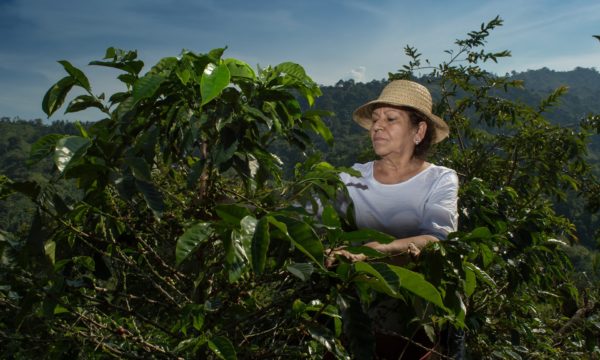
- Oranges – from Flickr by Rosino
I start this week’s blog with a challenge for you:
You are a smallholder farmer living in a remote village in Brazil. You have decided to grow oranges, a crop that has done well in neighbouring farms and provided a good income. It’s November and your crop is growing well, but you begin to notice symptoms of a disease on some of your oranges. You correctly identify this as black spot, and decide to look into how you’re going to treat it. You need to know:
- What fungicides can you use to treat ‘black spot’ in oranges?
- What fungicides can be legally used on citrus fruits in Brazil and in the countries that will be importing your produce, such as the US?
- At what levels or concentrations is the use of these fungicides acceptable in Brazil and importing countries?
You only have ten minutes before your access to the internet gets cut off, and as it is November you can only use information published before December 2011. You need to decide what fungicide to use and how much to apply.
Got your final answer?
For those who attempted to take on the challenge, it was probably quite a struggle to find the answer (for anyone who cheated and read more recent articles, you’ll know that the fungicide I was eluding to was carbendazim!). My point? The importance of such knowledge and the current lack of available, clearly sign-posted information.
As farmers put their time, effort and resources into growing crops, finding themselves unable to sell their produce afterwards is more than a little frustrating, as orange farmers in Brazil found out this week. Their use of the fungicide carbendazim against black spot disease (Guignardia citricarpa) is legal in Brazil – but now banned in the US. After the fungicide was detected in juices, oranges are now being tested and turned away at the borders.
Plantwise is working to link farmers to new information like this, using the Plantwise Knowledge Bank and clinics. These projects are continuously developing, but this latest issue just highlights the importance of the Plantwise mission. Without access to key information on pests, diseases and how to treat them, farmers cannot meet the standards expected of them by a multitude of possible buyers.
Significant price increases in the cost of orange-based products are now being seen, and without projects like Plantwise, this could happen to any number of other commodities at any time. If we want to stop the cost of living increasing and food security decreasing, research and information sharing is of paramount importance.
Sources and more information:
US: FDA says fungicide has been detected at low levels in orange juice, 11 Jan 2012
Orange juice prices hit record high after fungicide found in Brazil imports, 11 Jan 2012
Is there fungicide in our orange juice? FDA tests entire U.S. supply for illegal chemical found in imports from Brazil, 12 Jan 2012
FAO information for orange growers
Image:
http://www.flickr.com/photos/rosino/83614544/ or can be found on Wikimedia commons.
3 Comments
Leave a Reply
Related News & Blogs
How Plantwise plant clinics supported a women-led cottage industry in India
Women preparing biopesticides at a cottage industry. (Photo: MSSRF, Tamil Nadu, India) In 2003, twelve women in Chokkalingam Puddur village started a local biocontrol agent production unit. The Ellya Thendral women self-help group produced and marketed…
31 March 2022






For anyone in need of pesticide information who is finding it hard to track down, try:
– EU pesticides database (www.ec.europa.eu/sanco_pesticides/public/index.cfm)
– PAN pesticide database (www.pesticideinfo.org)
– Your national pesticide guide
Some interesting points:
http://www.freshplaza.com/news_detail.asp?id=92113
Brazil: Criticism over handling of carbendazim scandal:
http://www.freshplaza.com/news_detail.asp?id=92353